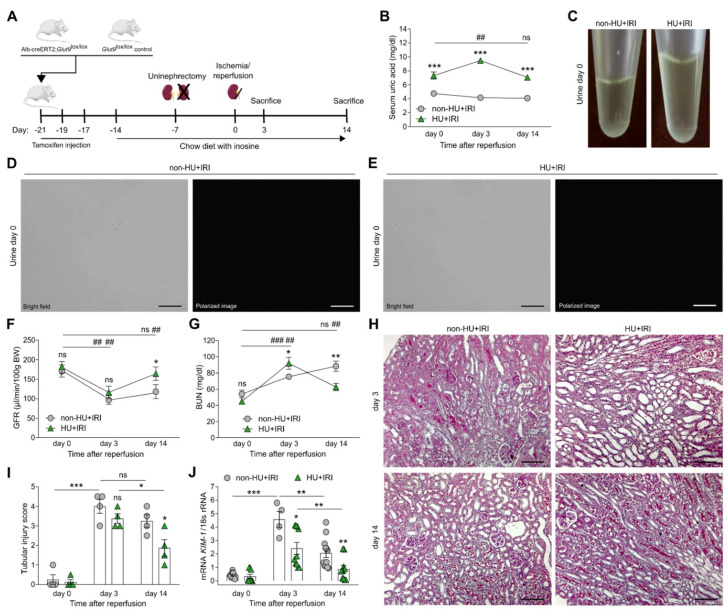Figure 3.
Asymptomatic hyperuricemia improves kidney function in acute organ injury. (A) Schematic of experimental setup. Hyperuricemic Alb-creERT2;Glut9lox/lox (HU) and Glut9lox/lox control (non-HU) mice were injected with tamoxifen and placed on a chow diet enriched with inosine to induce hyperuricemia (HU). Nephrectomy was performed (day 7) prior to clamping of the left renal pedicle for 15 min to induce ischemia/reperfusion injury (IRI). Mice were sacrificed on day 3 or 14. (B) Serum uric acid levels were measured by colorimetric assay. (C) Images of urine from mice before IRI showing no UA crystal deposits. (D,E) Representative bright field and polarized images of urine from non-HU + IRI and HU + IRI mice showing no UA crystals. Magnification ×400. (F,G) Kidney function was evaluated by glomerular filtration rate (GFR) (F) and blood urea nitrogen (BUN) levels (G) over time. (H,I) Representative images of PAS-stained kidney sections (H) and histological tubular injury scores (I). Magnification, ×100. (J) Intrarenal mRNA expression levels of the kidney injury marker KIM-1 determined by RT-qPCR. Data are mean ± SEM from 3 to 7 mice in each group. * p < 0.05; ** p < 0.01; *** p < 0.001; ns, not significant; ## p < 0.01; ### p < 0.001; two-way ANOVA with Tukey’s post hoc test.

